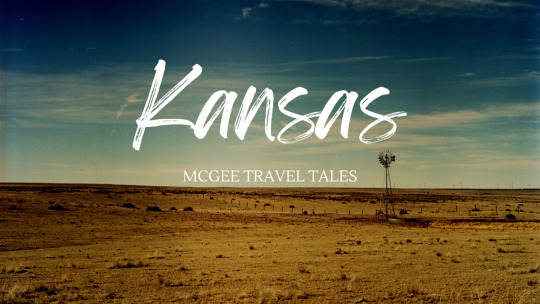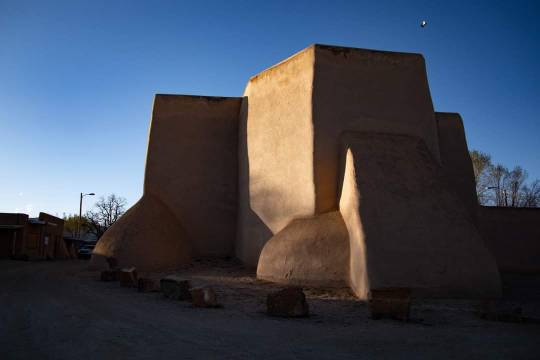#Santa Fe Trail
Explore tagged Tumblr posts
Text

Olivia de Havilland (1940)
255 notes
·
View notes
Text

Errol Flynn
#Errol Flynn#actor#handsome#swashbuckler#movies#classic#Hollywood#vintage#TCM#SUTS 2023#Errol Leslie Thomson Flynn#Australian#Golden Age of Hollywood#The Adventures of Robin Hood#Santa Fe Trail#Dodge City#San Antonio#Captain Blood#Warner Bros#The Private Lives of Elizabeth and Essex#The Sea Hawk#Dive Bomber#They Died with Their Boots On#That Forsyte Woman#womanising#drinking#smoking#marriage#children#Sean Flynn
10 notes
·
View notes
Text
Along the Santa Fe Trail
The Santa Fe trail stretches from Independence, Missouri to Santa Fe, New Mexico. The trail is almost 900 miles and crosses parts of five states. I have not traveled all along it’s length but I have been to a number of neat locations and I hope to visit more. Dodge City When those traveling the Santa Fe Trail reached Fort Dodge, east of current day Dodge City, they had a choice to make. They…

View On WordPress
#Bent&039;s Old Fort#Cimarron National Grasslands#Dodge City#Historic Adobe Museum#Santa Fe Trail#Santa Fe Trail Tracks#Wagon Bed Springs
2 notes
·
View notes
Text
This time last year, we were on the Santa Fe National Historic Trail, cruising down the eastern slopes of the Sangre de Cristo Mountains into the Great Plains of Oklahoma and Kansas. Taos, New Mexico to Dodge City, Kansas. Just a couple of travelers on an open highway that came to be known as the Santa Fe Trail in 1821.




2 notes
·
View notes
Text

Errol Flynn,Olivia de Havilland,Ronald Reagan and Raymond Massey in Santa Fe Trail (1940) - poster
#Errol Flynn#Olivia de Havilland#Ronald Reagan#Raymond Massey#Santa Fe Trail#1940s#old hollywood#posters
0 notes
Text
Santa Fe: Getting to Know The City Different
It has been more than a decade since I lived in Santa Fe. But it’s a city one cannot easily forget. In many ways, it’s a city that I will always miss. I fell in love with Santa Fe the first time I visited, about 1975, and I still cherish the years that I lived and worked there. Long described by both residents and visitors as “The City Different,” Santa Fe was known by its earliest inhabitants…
#Art#Camino Real#Canyon Road#Festivals#History#Indian Market#La Fonda#New Mexico#Oldest Church#Pueblos#Route 66#Santa Fe Trail#Spanish Market#The City Different#Zozobra
0 notes
Text
SUSAN SHELBY MAGOFFIN // DIARIST
“She was an American diarist and the first woman to write an account of travelling the Santa Fe Trail. Her diaries from 1846-47, a time when trade on the trail was at its high point, record important details of the Mexican-American War. This is the minutiae of history which is rarely captured - the conditions of travel, the people, the flora and fauna. She had a miscarriage on the way, at Bent's Fort, Colorado. She died after the birth of her fourth child.”


0 notes
Text
The Hidden Legacy: Cathay Williams, the Female Buffalo Soldier
Cathay Williams was once an enslaved woman but later disguised herself as a man so she could become a soldier. Cathay Williams was the first African American woman to enlist and the only documented woman to serve in the United States Army, while disguised
Cathay Williams was once an enslaved woman but later disguised herself as a man so she could become a soldier. Cathay Williams was the first African American woman to enlist and the only documented woman to serve in the United States Army, while disguised as a man, during the Indian Wars. Williams is also the only known female Buffalo Soldier. Cathay Williams was born to an enslaved mother and a…

View On WordPress
#African American History#American History#black history#Black women#Buffalo Soldiers#Civil War#miliary#Santa Fe Trail#us history
1 note
·
View note
Text
#errol flynn#olivia de havilland#captain blood#the charge of the light brigade#dodge city#four's a crowd#the adventures of robin hood#the private lives of elizabeth and essex#santa fe trail#they died with their boots on
1 note
·
View note
Text










Santa Fe Trail (Michael Curtiz, 1940)
They Died with Their Boots On (Raoul Walsh, 1941)
#errol flynn#santa fe trail#michael curtiz#they died with their boots on#raoul walsh#raymond massey#screencaps
0 notes
Text

Susan Shelby Magoffin (30 July 1827 – 26 October 1855) was the wife of a trader from the United States who travelled on the Santa Fe Trail in the late 1840s. The diary in which she recorded her experiences has been used extensively as a source for the histories of the time.
𝐁𝐢𝐨𝐠𝐫𝐚𝐩𝐡𝐲
Susan Shelby was born into a wealthy family on 30 July 1827 on their plantation near Danville, Kentucky. Her grandfather was Isaac Shelby, a hero of the American Revolutionary War and the first governor of Kentucky. On 25 November 1845, when aged eighteen, she married Samuel Magoffin. Samuel was the son of an Irish immigrant who had prospered in Kentucky. Samuel and his brother James Wiley Magoffin had been active in the Santa Fe trade since the 1820s, travelling widely in the United States and Mexico and gaining considerable wealth. James became U.S. consul at Saltillo in 1828 and married the daughter of a prominent Chihuahua merchant in 1830.
Samuel Magoffin took his bride with him, travelling in as much comfort as possible, on the next trading journey, leaving Independence, Missouri on 10 June 1846. According to Susan Magoffin, their outfit included "fourteen big wagons with six yoke each, one baggage wagon with two yoke, one dearborn with two mules (this concern carries my maid) our own carriage with two more mules, and two men on mules driving the loose stock." They brought a maid, a cook and a coop of live chickens with them. Susan thought she was the first "American lady" to have made the trip.
On 31 July 1846, Susan Magoffin suffered a miscarriage at Bent's Fort, just after her nineteenth birthday. The Magoffins reached Santa Fe, New Mexico on 31 August 1846. From there, they headed south to El Paso del Norte, Chihuahua and Saltillo. Susan's health began to suffer from the hardships of the journey. While sick with yellow fever in Matamoros, Chihuahua, Susan Magoffin gave birth to a son, who did not survive. The Magoffins returned to Kentucky in 1848, where a daughter was born in 1851. In 1852 they moved to Barrett's Station, near Kirkwood, Missouri, where Samuel bought a large estate. Susan's health had been irreparably damaged by the hardships of the Santa Fe expedition. A second daughter was born in 1855. Susan died soon after, on 26 October 1855, and was buried in St. Louis, Missouri.
Susan Magoffin shared the common Anglo-American prejudices of the time about Indians and Mexicans, at first assuming they were primitive and brutish, but was quick to adapt her views as she came to know them better. Thus she was astonished that an Indian woman who gave birth to a healthy child then went to the river half an hour later to bathe herself and her baby, and repeated this practice each day. She said "No doubt many ladies in civilized life are ruined by too careful treatments during childbirth, for this custom of the heathen is not known to be disadvantageous, but it is a 'heathenish custom.'" She said, "I did think the Mexicans were as void of refinement, judgement etc. as the dumb animals till I heard one of them say 'Bonita muchachita' [pretty little girl]! And now I have reason and certainly a good one for changing my opinion; they are certainly very quick and intelligent people." When she reached El Paso del Norte, Susan was greatly impressed with the civilized manners and learning of her Mexican hosts.
𝐉𝐨𝐮𝐫𝐧𝐚𝐥
Susan Magoffin's journal covers the journey from its start until 8 September 1847. The Magoffins travelled along the Santa Fe trail and down into Mexico in the wake of the invading United States army during the Mexican–American War (1846–1848). It is an invaluable source of information on the conditions of the time, the people and the events, often providing a unique woman's perspective.
𝐀𝐜𝐫𝐨𝐬𝐬 𝐭𝐡𝐞 𝐩𝐥𝐚𝐢𝐧𝐬
The journey took the Magoffins due west from Independence, Missouri, across the prairies of what is now Kansas, where she observed many migrating buffaloes. She recorded, "Such soup as we have made of the hump ribs, one of the most choice parts of the buffalo. I never eat it's equal in the best hotels of N.Y. and Philada. And the sweetest butter and most delicate oil I ever tasted is not surpassed by the marrow taken from the thigh bones." By 13 July some of the novelty had worn off. She wrote, "Passed a great many buffalo, (some thousands) they crossed our road frequently within two or three hundred yards. They are very ugly, ill-shapen things with their long shaggy hair over their heads, and the great hump on their backs, and they look so droll running." She witnessed a burial on the plains and was impressed by the great pains taken to protect the body from wolves with a deep grave covered in stones and the earth tamped down by cattle. Their carriage rolled over on 4 July, and on the 21st their tent collapsed in a violent storm.
𝐁𝐞𝐧𝐭'𝐬 𝐅𝐨𝐫𝐭 𝐚𝐧𝐝 𝐒𝐚𝐧𝐭𝐚 𝐅𝐞
Susan became ill, and when they reached Bent's Fort on 27 July she took to bed in the spacious private rooms that they had reserved. The "Army of the West" was at the fort when the Magoffins arrived, ready to launch their invasion south into New Mexico. Shortly after her nineteenth birthday, she suffered a miscarriage, which forced them to delay their onward journey. Leaving Bent's Fort on 14 August 1846, they reached the Mexican settlement at Mora Creek on 25 August, where Susan was shocked at the primitive housing, and the next day came to Las Vegas, New Mexico. They continued south to Santa Fe, which they reached on 31 August.
The army under General Stephen W. Kearny had entered Santa Fe on 15 August 1846 without opposition, since the Mexican governor Manuel Armijo had told his soldiers not to fight. Susan's brother-in-law James Magoffin, who had been sent to parley with Armijo by Kearny, may have bribed Armijo to prevent resistance. In Santa Fe the Magoffins became part of the "high society" of the town, mingling with wealthy traders, army officers and the elite of the Hispanic society. She described Doña Gertrudes Barcelo as "the principal monte-bank keeper in Santa Fé, a stately dame of a certain age, the possessor of a portion of that shrewd sense and fascinating manner necessary to allure the wayward, inexperienced youth to the hall of final ruin."
Visitors to Bent's Fort today can visit Susan's Room located on the upper level in the Northeast corner of the building. It is a recreation of how the room may have appeared with period-correct furnishings.
𝐒𝐨𝐮𝐭𝐡 𝐢𝐧𝐭𝐨 𝐌𝐞𝐱𝐢𝐜𝐨
The Magoffins left for the South on 7 October 1846, ten days after the army. Travelling along El Camino Real de Tierra Adentro, the main route south, they encountered Pueblo Indians, the main farming people of New Mexico. Susan found that they would pay twice as much for empty glass bottles than would be charged for the full bottles in the United States. They spent some time at San Gabriel, where Susan fell ill for a while with a fever. A lady there taught her to make tortillas, which she found to take much more work than she expected and also showed her knitting techniques. Leaving there towards the end of January 1847 they traveled south through the Jornada del Muerto to Doña Ana. The Taos rebellion had broken out, so they were in fear of attack by Mexicans in addition to the danger of the desert crossing.
At El Paso del Norte on 17 February 1847, they lodged at the house of the priest Ramón Ortiz y Miera, a spacious house surrounded by orchards and vineyards. A fierce nationalist, Father Ortiz had been taken prisoner by Colonel Doniphan for encouraging armed resistance to the U.S. army. However, he was known for his hospitality to visitors. She was struck by the civilized atmosphere of the house, and particularly taken with a little girl who, "...only six years of age, carries with her the dignity of our girls of eighteen. It attracted my attention particularly the evening I came, with the same ease of a lady much accustomed to society, she entered the room, with a polite bow and shook hands with me and seated herself.
The Magoffins continued south in the wake of Colonel Doniphan's army, with Susan's health deteriorating due to the rigours of travel. Her journal ends on 8 September 1847.
𝐓𝐞𝐥𝐞𝐯𝐢𝐬𝐢𝐨𝐧 𝐝𝐫𝐚𝐦𝐚𝐭𝐢𝐳𝐚𝐭𝐢𝐨𝐧
The actress Linda Marsh was cast as the historical Susan Shelby Magoffin in the 1965 episode, "No Place for a Lady", on the syndicated television anthology series, Death Valley Days. Simon Scott played Magoffin's husband, Samuel, and host Ronald W. Reagan was cast as frontiersman William Bent.
(𝐈𝐦𝐚𝐠𝐞: 𝐒𝐮𝐬𝐚𝐧 𝐒𝐡𝐞𝐥𝐛𝐲 𝐌𝐚𝐠𝐨𝐟𝐟𝐢𝐧)
(𝐒𝐨𝐮𝐫𝐜𝐞: 𝐖𝐢𝐤𝐢𝐩𝐞𝐝𝐢𝐚 & 𝐓𝐡𝐞 𝐆𝐞𝐧𝐭𝐥𝐞 𝐓𝐚𝐦𝐞𝐫𝐬: 𝐖𝐨𝐦𝐞𝐧 𝐨𝐟 𝐭𝐡𝐞 𝐎𝐥𝐝 𝐖𝐢𝐥𝐝 𝐖𝐞𝐬𝐭)
Source: Facebook
Historypedia
1 note
·
View note
Text

#beyond the adobe#western style#western living#ranch life#southwestern#boho western#cowboy life#santa fe#santa fe style#navajo jewelry#turquoise trail#navajo turquoise#zuni turquoise
88 notes
·
View notes
Text

#nature#mountains#hiking#landscape#new mexico#forest#trail#footprints#snow#winter#winsor trail#Santa Fe
70 notes
·
View notes
Text
Cimarron National Grassland
So years ago and I’m taking when Keltin and I first started dating, we visited the Cimarron National Grassland. I wanted to go back and explore a bit more. Over the holidays, Bear and I had a chance to go out to the grasslands and we had a good – if windy day – exploring. I will note that towards the end of our time there we ended up in a sticker patch and that was not fun. Thankfully Bear was a…
#Cimarron National Grasslands#Explore with Me#Hiking with Dogs#Kansas#Point of Rocks#Santa Fe Trail#Santa Fe Trail Tracks#Sticker Patch#Travel Vlog#US History#Windy
0 notes
Text



#sunset#galisteo#Santa fe#turquoise trail#New Mexico#my home#adventure#travel#my photo#desert#southwest#mountains#photography#aesthetic#landscape#beauty
82 notes
·
View notes
Text
January landscape in Santa Fe, New Mexico
3 notes
·
View notes